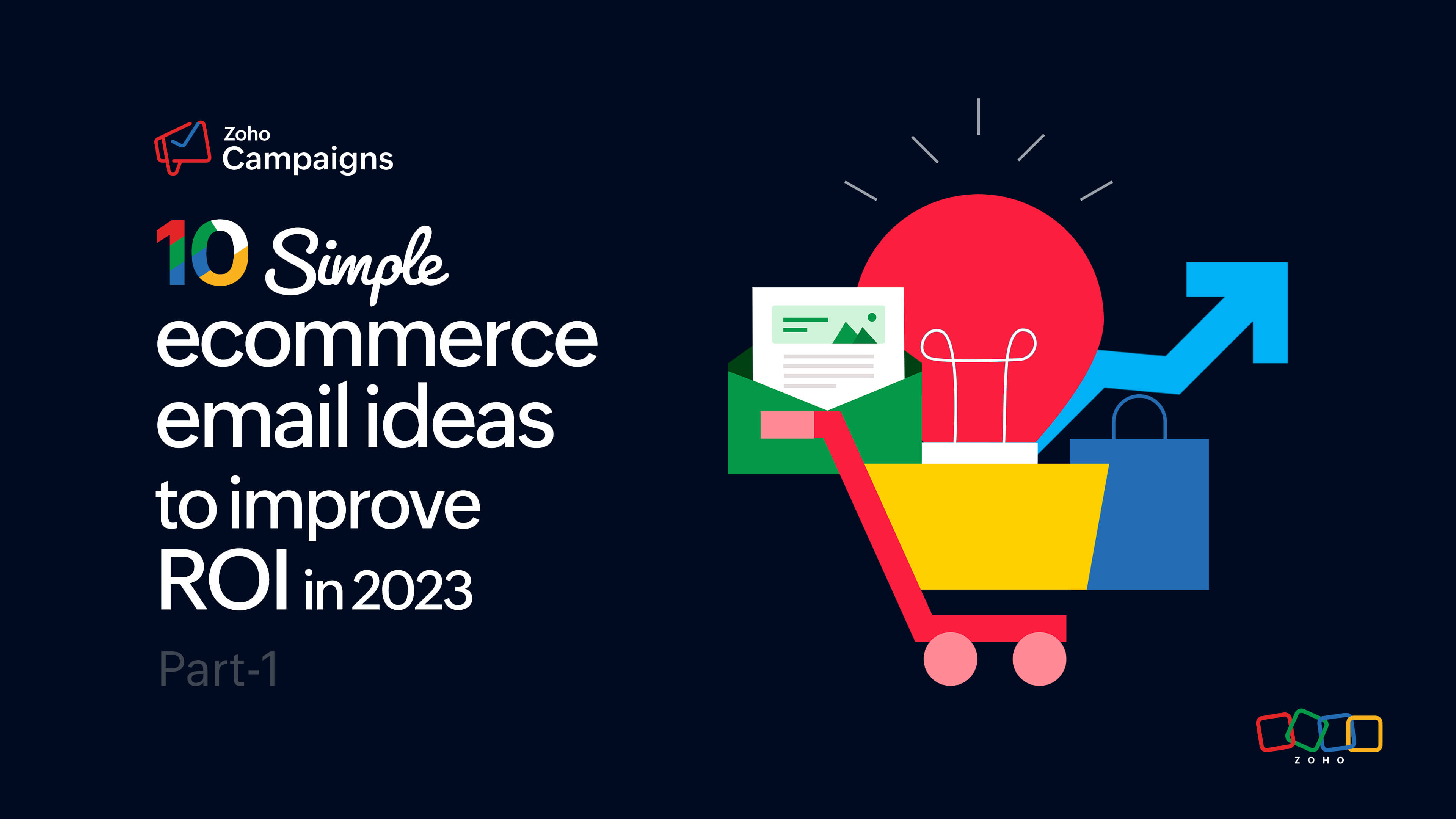
Ecommerce and email marketing are inseparable. While one is continually on the rise, the other persists in proving detractors wrong and fortifying its place as an affordable and effective marketing channel. In this article, we'll explore some of the ecommerce email marketing best practices to help you maximize ROI this year.
However, before delving deeper, let's address two questions:
Why do you need to use email marketing as a channel for ecommerce?
How do you use email marketing as a channel for ecommerce?
Why do you need to use email marketing as a channel for ecommerce?
There are multiple aspects of email marketing that make it an important channel for connecting with customers, one of which is its affordability. But the most important thing to consider is the fact that every buyer is unique, which makes email marketing the best tool for reaching out to customers with a highly personalized touch.
How do you use email marketing effectively as a channel within ecommerce?
Ecommerce depends on a few integral factors—like reachability, timing, and analytics—to facilitate an effective strategy. Here are a few things that you should do:
Collect information from your customers.
Reach out to them at the right time with the right content.
Engage with them based on their interactions.
Check reports and act accordingly.
In this article we will discuss this strategy in detail.
The best ideas for ecommerce email marketing in 2023
Segment your customers
Segmentation is an under-utilized feature in email marketing. Identifying a set of common attributes or behaviors among customers can make your work easier. For example, let's say a group of people buy a certain type of shirt from your store. That tells you that all these individuals have a common interest, and are likely to share interests with regard to content as well.

Try to identify commonalities like this and categorize your customers accordingly—and then send out updates and offers based on those particular preferences. Recognizing segments of your audience with common attributes enables you to test multiple variants of one campaign to see which one resonates with them the most.
Personalize your emails
The logical consequence of segmentation is personalization. Email marketing enables you to hold one-to-one conversations with customers, rather than issue a one-to-many lecture. Carefully altering your email template's background, content, images, or even the call-to-action (CTA) button based on each customer's preference can be very effective. You can also subtly infuse a more human element into your emails by addressing your customers by their first names.

Suppose you run an online apparel store, and even after segmentation, you're unable to reach out to every customer to generate more engagement. In that case, using merge tags and dynamic content can help you add a human touch while addressing your customers and save time in creating different versions of one template for different segments.
Design and craft emails with a purpose
As the owner of an ecommerce store, you're expected to provide regular updates to your existing customers about new offers, and to attract new customers by building a brand persona. To achieve those things, you need a well-designed ecommerce email marketing template that's easily readable, features interactive elements such as easily accessible CTA buttons, and renders well across all devices, including laptops and mobile phones.

Send emails to new customers
Establishing your brand for new customers influences their future buying behaviors. This is where a "welcome series" of emails can be effective.
Your objective here should be to acknowledge the importance of your new customers and welcome them with a simple template and a simple message.
For example, you could create a series of welcome emails in this order:
Email 1 - Welcome your customers to your brand, thank them for joining, and brief them about the onboarding process.
Email 2 - Educate your customers by sharing links to webpages, help documents, or videos about your brand.
Email 3 - Tell them about the offers and discounts exclusive for new customers to try to get them to initiate a purchase.
Email 4 - Thank the customers who have completed onboarding and send a final reminder email to those who haven't.

Since this is a top-of-the-funnel activity, your aim should be to educate the customers—so send them only the most relevant content.
Send emails to existing customers
As an email marketer, your greatest challenge is perhaps to connect with existing customers and ensure they continue shopping from your store. There are a few types of emails that serve this purpose:
Loyalty emails - These usually take time to gain traction and engagement. The main objective of these emails is to address the best customers in your mailing lists and reward them with exclusive offers and early discounts.
Promotional emails - There are customers who occasionally buy from you while not spending much. You can send them normal offers or product updates to initiate transactions.
NPS survey emails - You can send these out to new and existing customers alike to ask them to rate your brand and assess their likelihood of suggesting it to others.
Referral program emails - These emails work well among both new and existing customers. By asking them to suggest the brand to others and rewarding them for referrals with discounts and offers, you can both generate new business, incentivize returning customers to do business with you, and increase brand satisfaction across the board.

You should eventually send emails to existing customers to generate new customers.
Conclusion
Ecommerce alike other industries relies mainly on timely communication, and email marketing fits well in that scenario. Stay tuned for our next instalment where we will discuss more on the behavioral aspect of ecommerce email marketing and the use of workflows within such a setup.
Comments